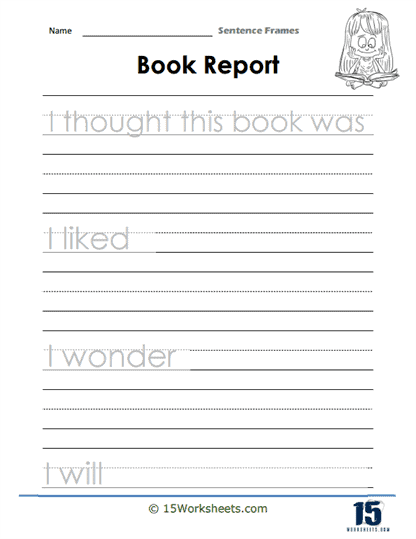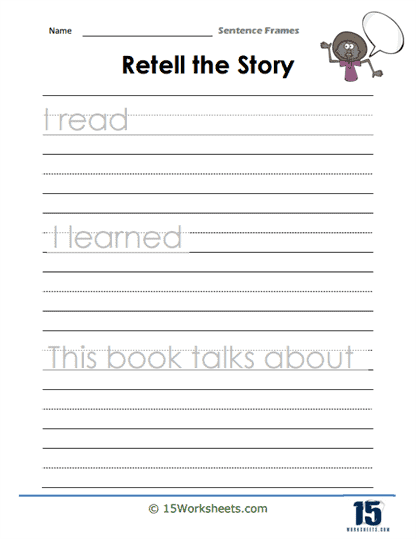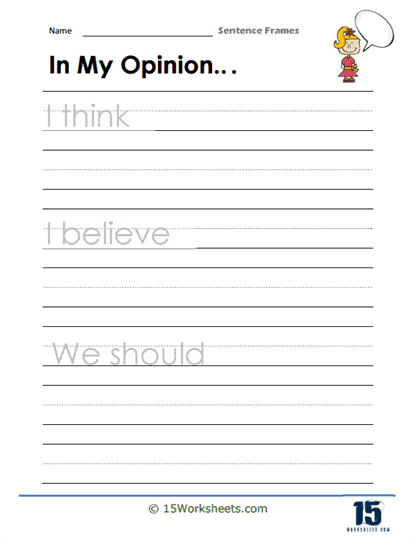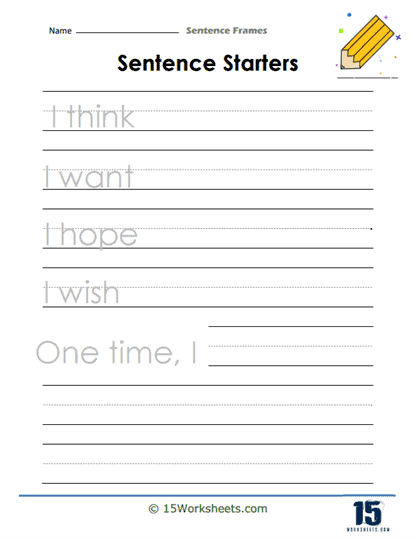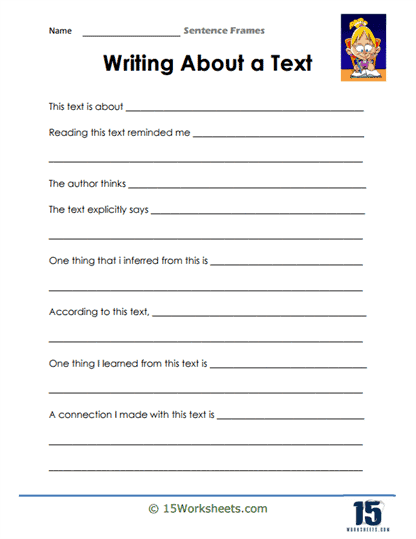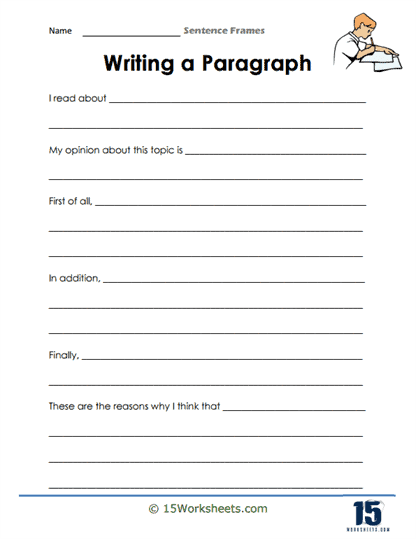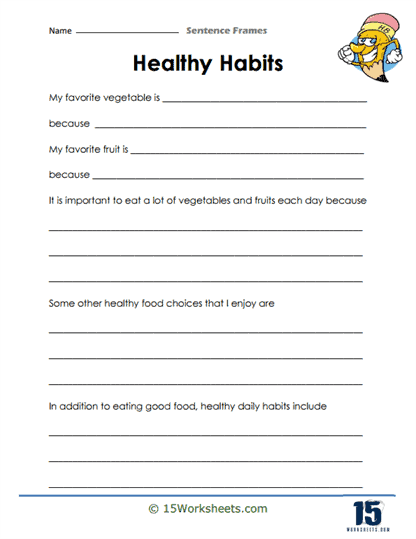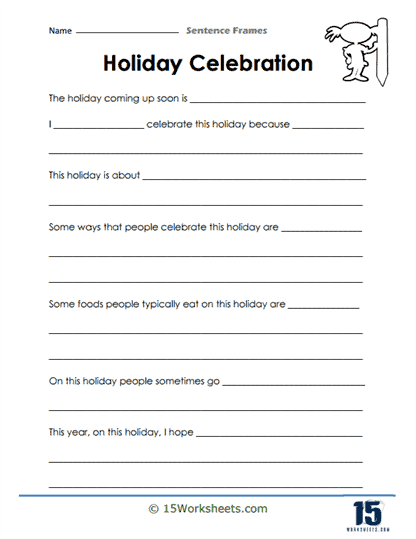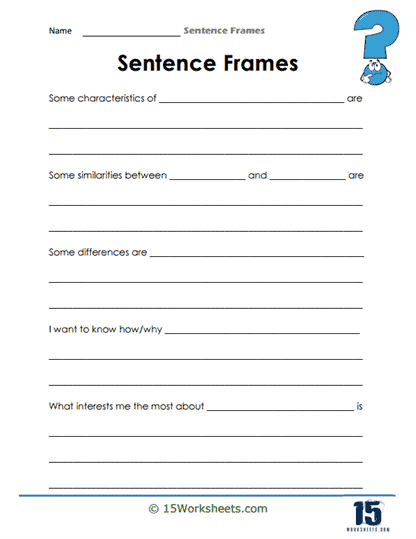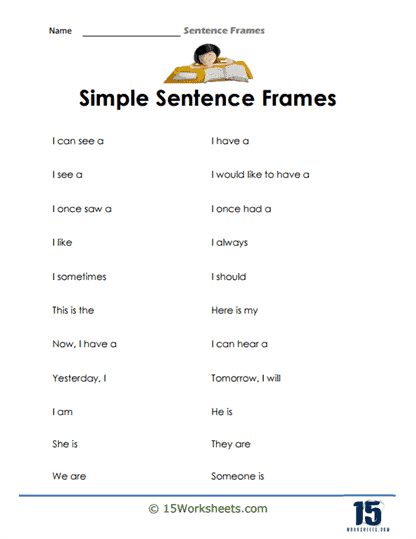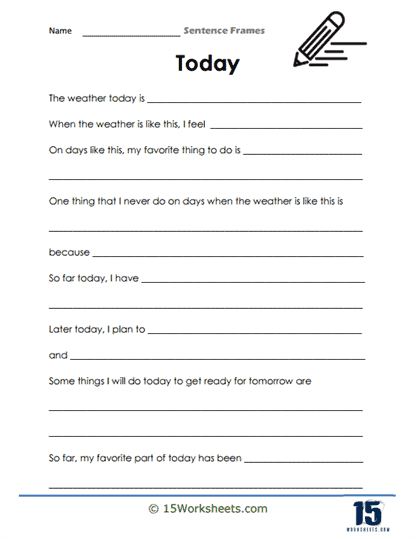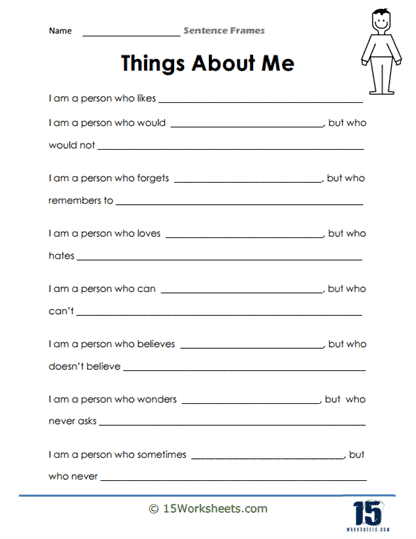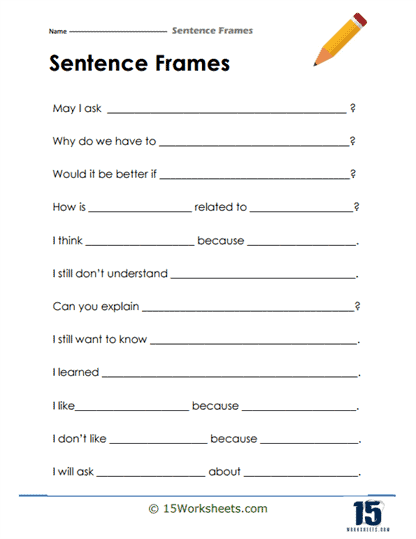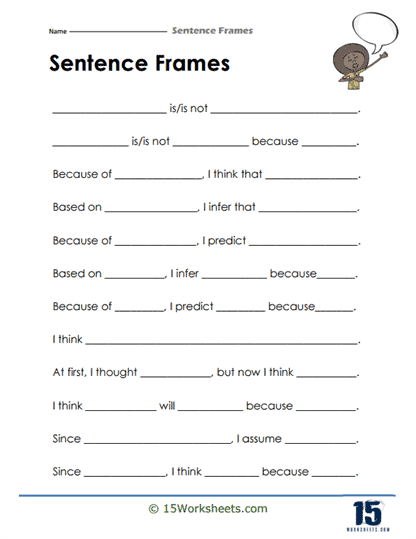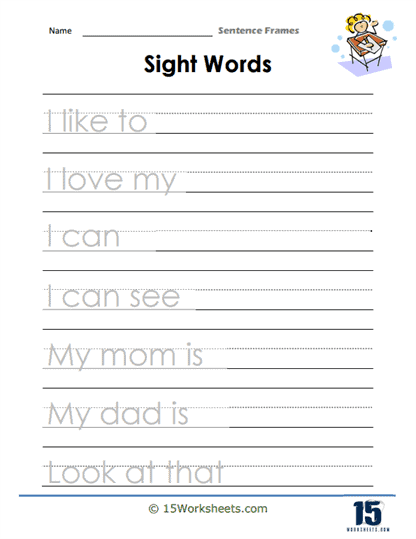Sentence Frames Worksheets
All About These 15 Worksheets
This series of 15 worksheets is a valuable resource designed to support students in developing strong writing skills by providing them with structured sentence frames. These worksheets offer a scaffolded approach that helps students organize their thoughts, express their ideas clearly, and enhance their writing fluency.
The exercises equip students with a variety of sentence frames—partial sentences or structured prompts—that provide a framework for constructing well-formed and coherent sentences. By using these frames as a starting point, students gain confidence in their writing abilities and develop the skills necessary to convey their ideas effectively. Through these worksheets, students will:
- Learn to vary sentence length, incorporate appropriate conjunctions, and create well-structured paragraphs;
- Practice incorporating phrases for introducing ideas, providing evidence, making comparisons, stating opinions, and concluding their arguments;
- Showcase their creativity in narrative and descriptive writing;
- And convey their reflections and experiences in a structured and meaningful manner.
This series is suitable for students across different grade levels and can be integrated into language arts classes, writing workshops, or individual writing practice. By using these worksheets, teachers provide their students with a supportive framework that helps them develop strong writing skills and express their ideas confidently.
Through the varied exercises and prompts, students develop essential writing skills, including sentence construction, organization, vocabulary usage, and critical thinking. In summary, these worksheets foster clarity, coherence, and fluency in writing, enabling students to convey their thoughts effectively and communicate with precision. This Sentence Frames worksheets series empowers students to build a solid foundation in writing, enhancing their ability to express themselves confidently and become proficient writers.
What are Sentence Frames?
Sentence frames are a form of scaffolding in which the learning occurs by analyzing chunks of information obtained by breaking it up. In this method, there are blank spaces between the sentences to be filled. The sentences could be in any form, such as analysis, explanation of something, or evaluation like showing a cause and effect relationship.
This technique can help students start categorizing the information in their brains. Teachers can use sentence frames for any subject, not just in English. However, sentence frames are a must for English learners.
Why Use Sentence Frames in Your Classroom
1. Sentence frames change learning dynamics by focusing on the productivity of the information provided to the students. It is easy to check the output of what you have taught to the class. Also, the teachers can assess the retaining power of the students.
2. Most students find it difficult to form an answer, especially those who are still learning the language and are not familiar with or sure about the sentence structures. The use of sentence frames in class provides them with an opportunity to put information into the body already given. With more practice on the frames, they become familiar with the structure for answers.
3. The sentence frames allow meaningful conversations between students as they predict the answers to the blanks given in the frame. This creates an atmosphere of mutual learning and instills confidence in students to form and present their opinion. It also promotes peer learning and teamwork in classrooms.
4. They provide teachers the space to focus on each student’s problems by looking at every individual’s answers. This way, they get a chance to learn which student is still not aware of a concept.
5. They are the first step toward information management. Scaffolding is a technique a teacher must know to make it easier for students to understand the topic. The related information can be asked in sentence frames to make it accessible for students.
6. One of the benefits of using sentence frames is that it reduces peer pressure and stress which can lead to anxiety in many students. Since these are primarily open-ended frames, there is a variety of options.
7. The sentence frame technique is tested and based on research and survey; it is considered an influential mechanism by most teachers to promote efficient learning.
Sentence frames are a great learning technique for compartmentalizing the information on any subject, especially for English language learners and those differently-abled kids. The use of sentence frames in classrooms is a stepping stone for students to learn and become writers. The critical thinking process refined with this activity enables students to write stories, essays, problem-solving, and research papers in the future.
Sentences Require Structure
Without structure, no sentence can make sense. This applies to English and every other language, such as Persian, Arabic, German, and many others. However, have you ever noticed or pondered that sentences are not only specific to languages? Even writing down an equation in mathematics or a formula in science requires a structure.
The technique of a sentence frame is used to help students use a specific format to draw down their answers to questions. This technique fills in the blanks where those exact words structure the entire answer. Sentence frames are used for almost every subject, such as math, science, history, and English.
How to Use Sentence Frames
Using sentence frames is relatively easy. It allows students to brainstorm their answers rather than cramming or guessing answers. A blank is provided in a sentence, which will enable students to think of their solutions and the possible options which may fill up the blanks.
The blanks are either at the start of the sentences, the middle of the sentence, or at the end of the sentences. The student is then set free to fill up the blank with either one word or more than one. This allows the students to be more analytical about their answers.
Sentence frames are extremely helpful in learning as students think analytically, content-wise, and academically. When students fill sentence frames with their own choice of words, they can learn more and establish a logical connection between what they have learned and how they are reproducing it.

